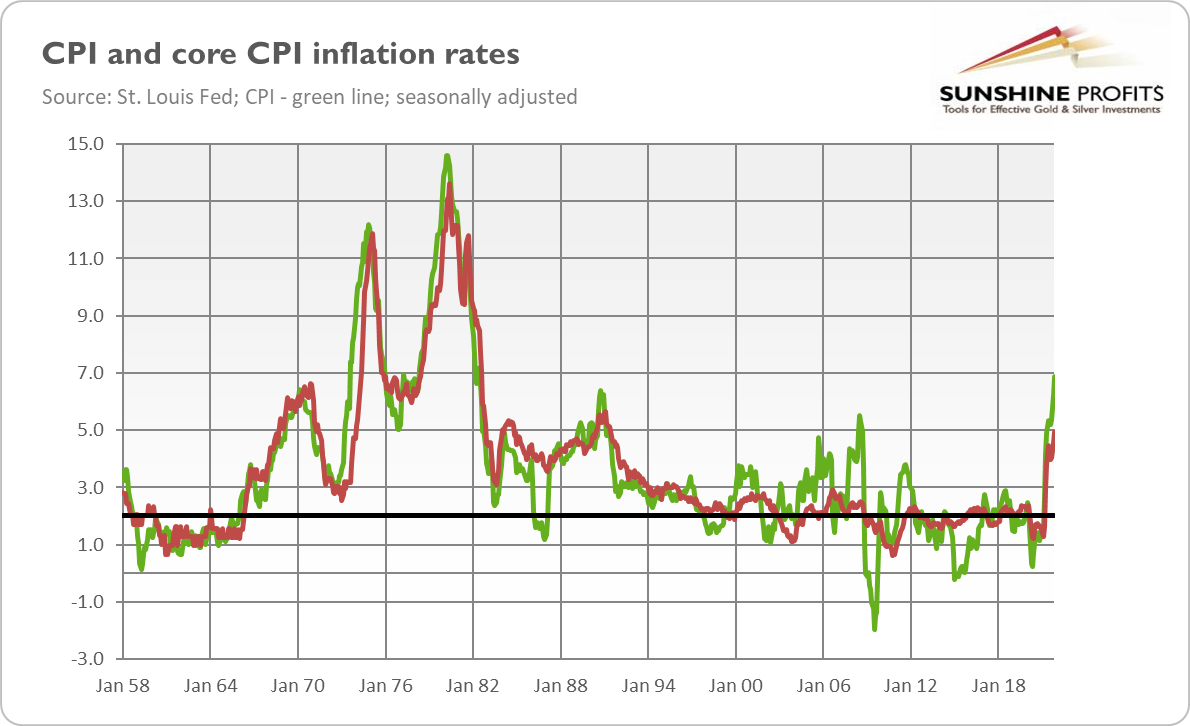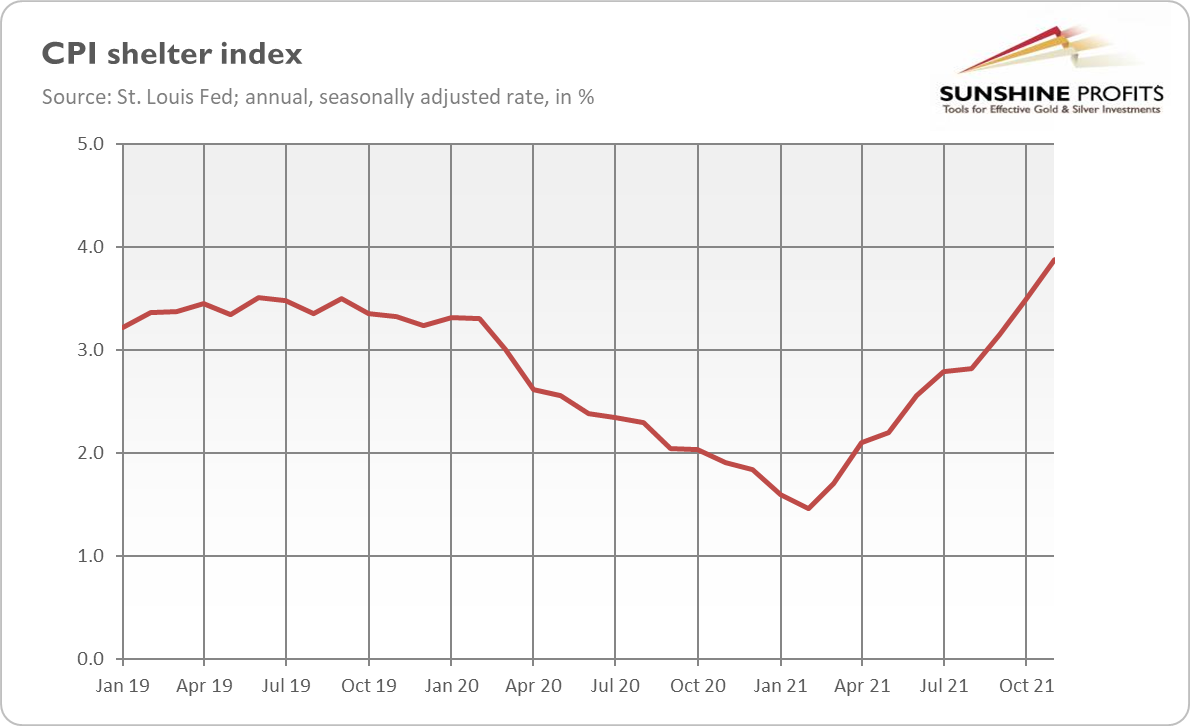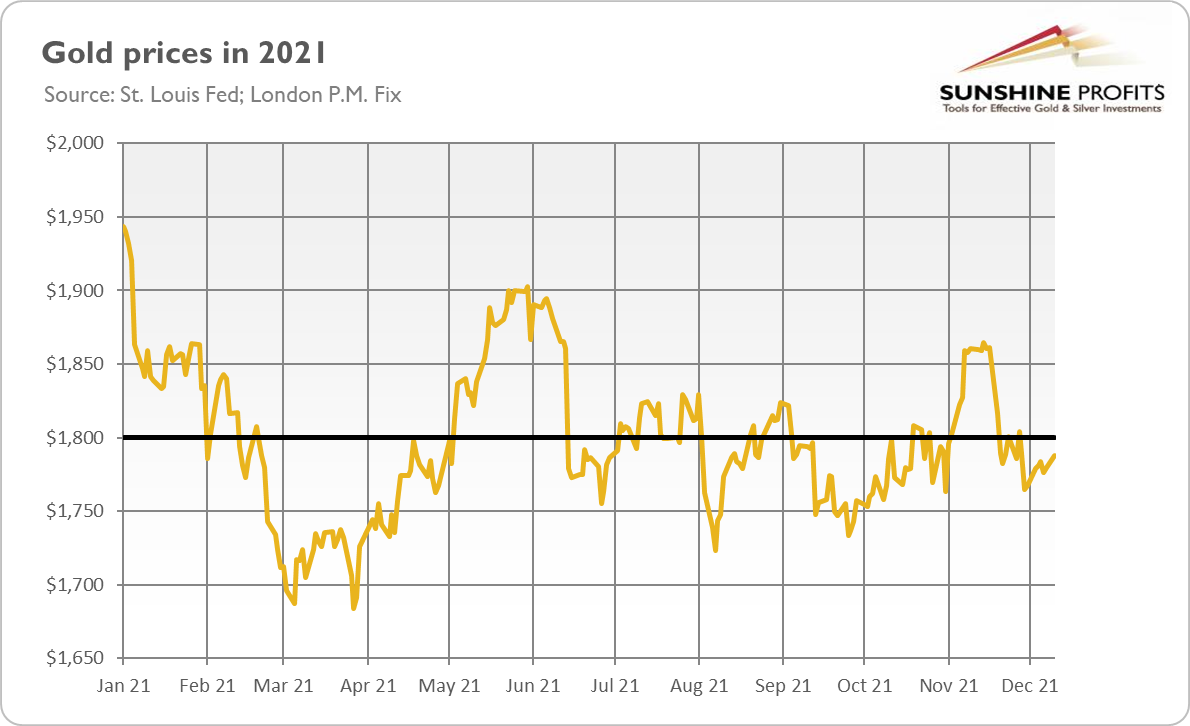The inflation beast is growing stronger. Unfortunately for gold bulls, we cannot say the same about the yellow metal.
The current number of the beast is not 6.66%, but 6.8%. This is how high the CPI annual inflation rate was in November. The number came above expectations and implies further acceleration in inflation from 6.2% in October. It was also the largest 12-month increase since June 1982, as the chart below indicates.
The latest BLS report on inflation also shows that consumer inflation rose 0.8% on a monthly basis after rising 0.9% in October. The core CPI rate increased 0.5% in November, following a 0.6% increase in the previous month. On an annual basis, it jumped 5% after a 4.6% increase in October. So, as Iron Maiden sings, “hell and fire was spawned to be released.”
Indeed, November readings clearly falsify central banks’ narrative about transitory inflation (which was already partially abandoned,) and confirm my claim that inflation will stay with us for longer. As a reminder, my bet is that we will see the peak of inflation no earlier than somewhere in Q1 2022. Actually, it might be even a bit later, as the Omicron coronavirus variant could contribute to supply disruptions and add to inflationary pressure.
It’s important to remember that current inflation is not merely a supply problem. The energy index is indeed surging, but the shelter index is also rising, and it has even surpassed the pre-pandemic level, as the chart below shows. So, inflation has a really broad nature, which makes perfect sense, as it was caused by a boost in the money supply and strong demand.
The BLS report confirms this view: “The monthly all items seasonally adjusted increase was the result of broad increases in most component indexes, similar to last month.”
Implications For Gold
The inflationary beast not only reared its ugly head, but it started roaring and growing stronger. The CPI inflation rate jumped to 6.8% in November, and it’s probably not the final number. Actually, it could have been even higher if the Omicron variant of coronavirus had not emerged, slowing down some expenditures.
What does this acceleration imply for the gold market?
Well, one week ago I wrote: “My bet is that inflation will stay elevated or that it could actually intensify further. In any case, the persistence of high inflation could trigger some worries and boost the safe-haven demand for gold.” Indeed, inflationary pressure intensified further, which pushed gold prices higher, as the chart below shows.

However, I also expressed concerns about the Fed’s reaction to high inflation and its implications for gold:
I’m afraid that gold bulls’ joy would be – to use a trendy word – transitory. The December FOMC meeting will be probably hawkish and will send gold prices down. Given the persistence of inflation, the Fed is likely to turn more hawkish and accelerate the pace of tapering.
The higher-than-expected inflation rate in November, and a very modest gold’s reaction to it, only strengthen my fears that tomorrow could be a great day for monetary hawks and a sad day for gold. Given such high inflation, the Fed has simply no choice and must accelerate the pace of the tapering and hiking cycle. So, to paraphrase Iron Maiden, sacrifice is going on tomorrow.
On the other hand, gold often bottomed out in December historically (in recent years, it did so in 2015, 2016, 2017 and 2019). We’ll find out soon whether my fears were justified.
